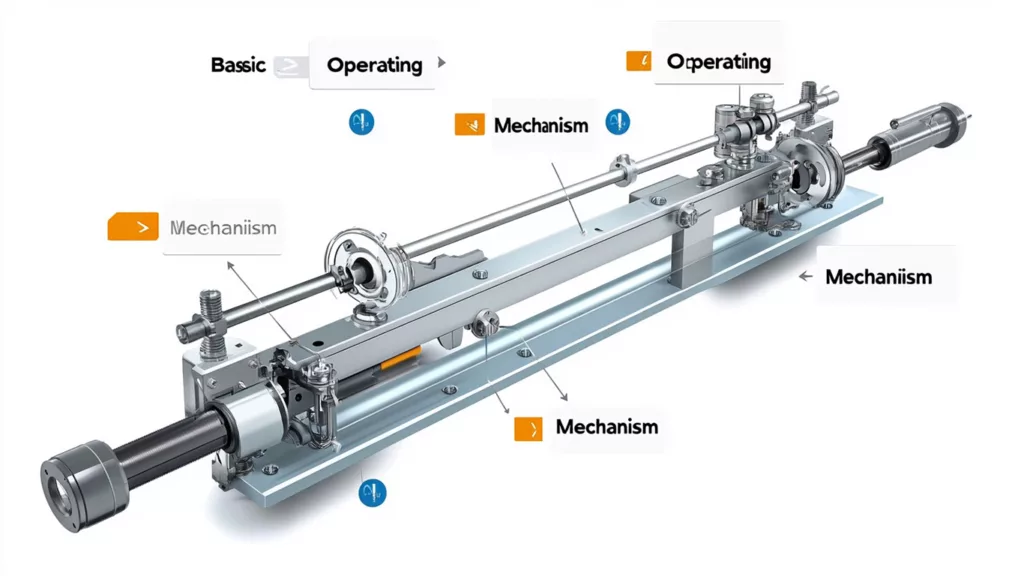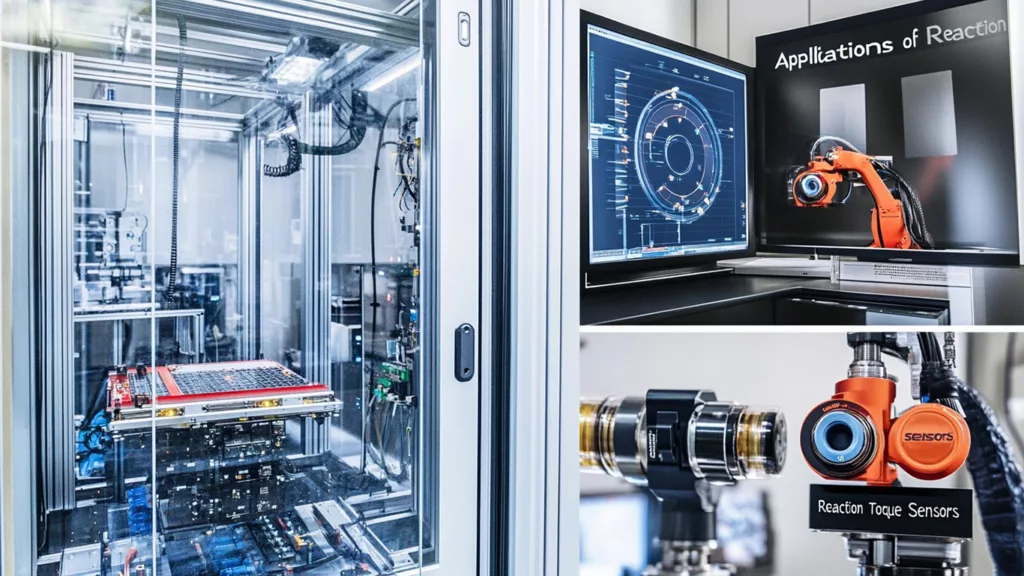Introduction to Reaction Torque Sensors
In an era where precision, control, and performance measurement drive innovation across industries, reaction torque sensors have carved out a crucial role. These compact but powerful devices play a vital role in evaluating rotational forces in mechanical systems, offering unparalleled accuracy and reliability in dynamic environments. Whether you’re optimizing a manufacturing line or fine-tuning a spacecraft component, understanding how these sensors work can open the door to smarter design, better performance, and improved product quality.
Definition and Functionality
A reaction torque sensor is a transducer that measures static or dynamic torque without allowing rotation of the sensor itself. Unlike rotary torque sensors, which spin with the shaft, reaction torque sensors stay stationary and detect torque through deflection or strain within the sensor body. Typically, they use strain gauges mounted on a shaft or structure that twists slightly when torque is applied. This mechanical deformation changes the electrical resistance of the gauges, producing an output signal proportional to the applied torque.
These sensors are designed for highly precise applications where detecting subtle torque changes is essential, including in quality control, system diagnostics, and automation feedback loops.
Importance in Various Industries
The utility of reaction torque sensors extends across a wide spectrum of industries. In automotive testing, they validate engine performance and steering systems. In aerospace, they ensure components meet rigorous torque specifications. Medical device manufacturers use them in robotic surgical tools, while industrial automation systems integrate them into robotic arms and actuators for real-time feedback and safety control.
Their ability to offer high-precision, repeatable measurements under varying environmental conditions makes them indispensable for maintaining the integrity of engineering systems.
Working Principles of Reaction Torque Sensors
Basic Operating Mechanism
At the heart of a reaction torque sensor is the strain gauge bonded to a carefully machined shaft. When torque is applied, the shaft experiences shear stress, leading to minute deformation. The strain gauges convert this mechanical stress into a measurable electrical signal. The sensor typically outputs a voltage (mV/V) or a digital signal via signal conditioning hardware.
Since the sensor body remains stationary, there’s no need for slip rings, making them more durable and easier to install compared to rotary sensors. This stationary design also minimizes maintenance and reduces the risk of signal interference.
Types of Reaction Torque Sensors
Depending on the application and torque range, reaction torque sensors come in several designs:
- Flange-Type Sensors: Ideal for bolt-on installations, offering high rigidity and excellent accuracy.
- Square Drive Sensors: Common in torque tool calibration setups.
- Low-Profile Pancake Sensors: Designed for applications with vertical space constraints.
- Miniature Sensors: Used in medical or aerospace setups where size is critical.
Each type is built to cater to specific environments and operational loads, often customized to client specifications.
Key Components and Their Roles
A typical reaction torque sensor comprises:
- Sensing Shaft: Engineered to flex slightly under torque, ensuring measurable deformation.
- Strain Gauges: Electrical resistance elements that detect strain.
- Wheatstone Bridge Circuit: Converts resistance changes into voltage output.
- Housing: Protects internal components, often built from stainless steel or anodized aluminum.
- Connector & Signal Conditioning Electronics: Interface the sensor with control systems and data acquisition units.
Together, these elements work in concert to ensure high-resolution torque detection and reliable performance across a variety of use cases.
Applications of Reaction Torque Sensors
Automotive Industry
In automotive R&D and production, reaction torque sensors help validate performance in:
- Engine torque analysis
- Transmission system diagnostics
- Steering column torque feedback
- Electric motor testing
These sensors enable engineers to fine-tune vehicle dynamics, reduce wear, and meet safety and emissions regulations.
Aerospace Applications
Aerospace systems are torque-sensitive by nature. Reaction torque sensors are used to:
- Test flight control actuators
- Validate satellite deployment systems
- Ensure torque compliance in composite material testing
- Monitor gearbox performance
Their high-resolution data supports mission-critical decisions in design and testing.
Manufacturing and Industrial Automation
In smart factories and automated assembly lines, reaction torque sensors provide:
- Tool calibration for torque-controlled screwdrivers
- Process control in robotic tightening systems
- Monitoring torque in conveyors and packaging machines
Their precision helps prevent part damage, ensures product consistency, and reduces downtime due to over-torque or tool failure.
Research and Development Uses
Reaction torque sensors are widely used in:
- Material testing rigs
- Biomechanical research
- Prototype validation setups
- Energy efficiency studies
Their adaptability and data accuracy make them perfect for experimental environments where precision is non-negotiable.
Advantages of Using Reaction Torque Sensors
High Precision Measurement
Reaction torque sensors deliver resolution down to 0.01 Nm or better, ensuring reliable torque detection in delicate systems. Their high signal-to-noise ratio and linearity help minimize measurement errors, even in dynamic load scenarios.
Real-time Data Acquisition
Thanks to modern signal conditioning and digital interfaces, these sensors support real-time torque monitoring, ideal for closed-loop control systems. Whether it’s in robotic grippers or engine test benches, live feedback enables automated adjustments and better decision-making.
Durability and Reliability
Built with rugged materials and sealed designs, reaction torque sensors withstand vibration, moisture, and fluctuating temperatures. They typically feature long operational lifespans, often exceeding 10 million cycles with negligible drift, making them highly cost-effective.
Challenges and Limitations of Reaction Torque Sensors
Calibration Issues
Maintaining accuracy over time requires regular calibration. Misalignment, wear, or environmental exposure can lead to drift. Organizations must ensure proper calibration procedures using certified equipment and weights to maintain sensor integrity.
Environmental Sensitivity
Extreme conditions—like high humidity, temperature fluctuations, or electromagnetic interference—can affect readings. While many models come with compensation features, sensor placement and insulation are critical in harsh environments.
Cost Considerations
High-quality reaction torque sensors, especially those with advanced signal conditioning and customization, can be expensive. However, the ROI justifies the cost through improved product quality, fewer defects, and better process control.
Future Trends in Reaction Torque Sensor Technology
Innovations in Design and Functionality
Sensor manufacturers are introducing non-contact, wireless torque sensors, which eliminate mechanical wear points and allow for easier installation. Additionally, new form factors and modular designs are being developed to meet the specific needs of robotic and compact systems.
Integration with IoT and Smart Technologies
Modern reaction torque sensors are being integrated with IoT platforms to provide cloud-based analytics, predictive maintenance alerts, and remote diagnostics. This connectivity adds intelligence to torque monitoring, enabling data-driven process optimization.
Potential for Enhanced Applications
Emerging industries like EV battery testing, prosthetic torque monitoring, and smart agriculture equipment are adopting these sensors for more refined control. As sensor technology evolves, reaction torque sensors are becoming key enablers of next-gen innovation.
Conclusion
Summary of Key Points
Reaction torque sensors are indispensable tools for measuring torque in static applications with exceptional accuracy. From understanding their operating principles to exploring their diverse applications and future potential, it’s clear that they offer tremendous value in both legacy and modern systems.
Final Thoughts on the Importance of Reaction Torque Sensors
As machines become smarter and systems more complex, reaction torque sensors stand at the intersection of precision and performance. Their ability to provide real-time torque insights under challenging conditions empowers engineers to build safer, more efficient, and more responsive technologies.
FAQs
What is a reaction torque sensor?
A reaction torque sensor is a stationary device that measures torque without rotating. It uses strain gauges to detect shaft deformation caused by applied torque.
How is a reaction torque sensor different from a rotary sensor?
Unlike rotary sensors, reaction torque sensors don’t spin with the shaft. They measure torque in a fixed position, making them ideal for static setups or limited space applications.
What industries use reaction torque sensors?
Automotive, aerospace, industrial automation, and R&D sectors commonly use these sensors for torque testing, quality control, and system diagnostics.
Are reaction torque sensors accurate?
Yes, high-end models provide accuracy within ±0.1% of full scale and excellent repeatability, making them suitable for precision engineering.
Do reaction torque sensors require maintenance?
Generally low-maintenance, but regular calibration and proper environmental setup are crucial to maintaining accuracy over time.
Can reaction torque sensors work in harsh conditions?
Many models are built with sealed housings and temperature compensation, making them suitable for industrial and outdoor use.
Clear Call-to-Action (CTA):
XJCSENSOR is a trusted manufacturer of reaction torque sensors and precision force sensor, offering fully customized and wholesale solutions. Our sensors are engineered for use in automotive systems, robotics, packaging, electronics, aerospace, and more.
💡 Ready to enhance your system with high-precision torque sensing?
📩 Contact our engineering team for expert consultations and tailored solutions.
🌐 Explore our catalog of torque sensors at XJCSENSOR.com
📢 Join our newsletter for the latest updates, case studies, and product innovations.
📱 Connect with us on LinkedIn, Twitter, and YouTube to see our sensors in action.



